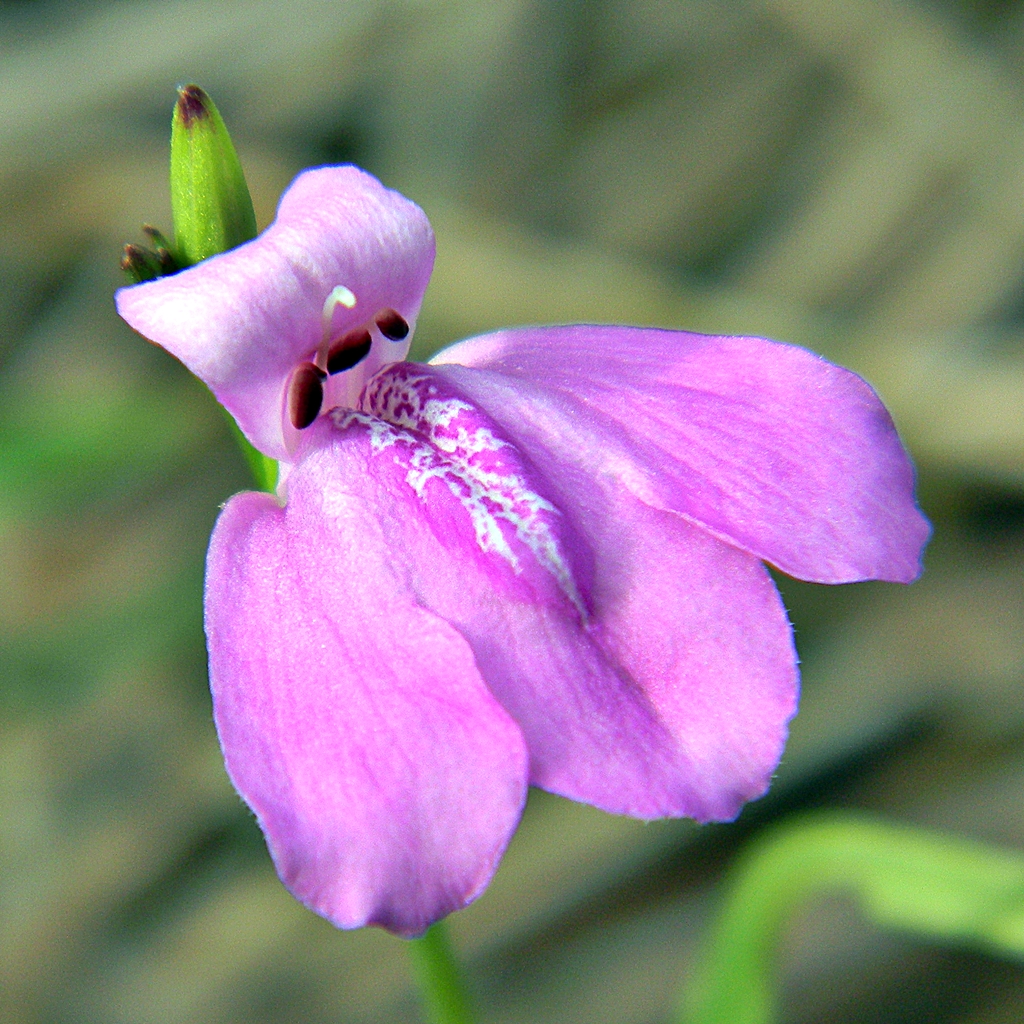Pineland waterwillow
Pictured above: Pineland waterwillow (Justicia angusta). Photo taken at Sweetbay Natural Area in Palm Beach County by Bob Peterson CC BY 2.0(CC BY 2.0). Click on terms for botanical definitions. View post as a PDF
Pineland waterwillow is an elegant wildflower found in lake and pond margins and wet pinelands, prairies and disturbed areas throughout much of Florida. It is near-endemic, occurring outside of Florida in only a few Georgia counties. The plant blooms spring through fall and attracts mostly bees.
Pineland waterwillow flowers are small (around ½ inch wide), vary in color from pinkish-white to deep lavender, and are two-lipped. The upper lip is two-lobed and curled. The lower lip is three-lobed and comparatively broad with purple spots along the center lobe. Flowers are axillary and born on spikes, although they are often solitary. They are subtended by five glandular sepals. Leaves are linear to lanceolate with entire margins. They may be sessile or petiolate and are oppositely arranged. Fruits are tiny capsules.
The genus name Justicia is an homage to Sir James Johnson, an 18th century Scottish horticulturalist. The species epithet angusta is from the Latin angustus, meaning “narrow,” and alludes to the narrow leaves.
Family: Acanthaceae (Acanthus family)
Native range: Throughout peninsula, some Panhandle counties
To see where natural populations of Pineland waterwillow have been vouchered, visit florida.plantatlas.usf.edu.
Hardiness: Zones 8A–10B
Lifespan: Short-lived perennial
Soil: Moist to wet, well-drained sandy or calcareous soils
Exposure: Full sun to partial shade
Growth habit: 6–12” tall
Propagation: Seed, cuttings, division
Garden tips: In the right conditions, Pineland waterwillow is easy to grow. It spreads via underground rhizomes and is best suited for informal gardens where it can roam on its own. It dies back in winter and is not drought tolerant.
Plants are occasionally available at nurseries that specialize in native plants. Visit PlantRealFlorida.org to find a native nursery in your in your area.

